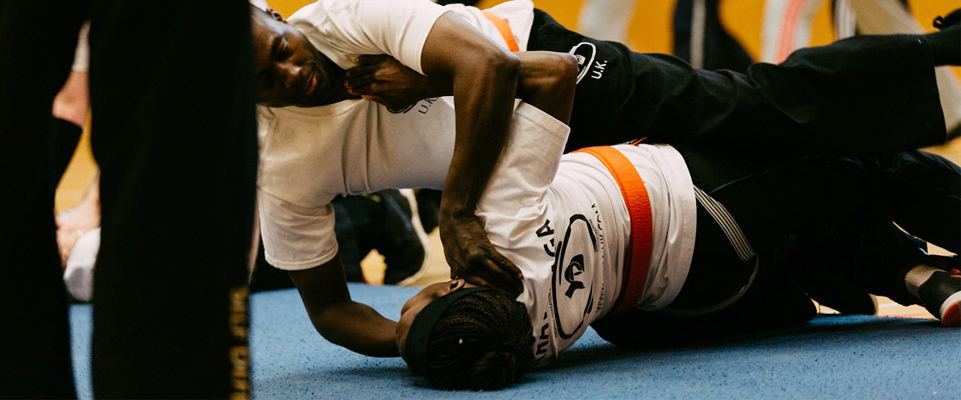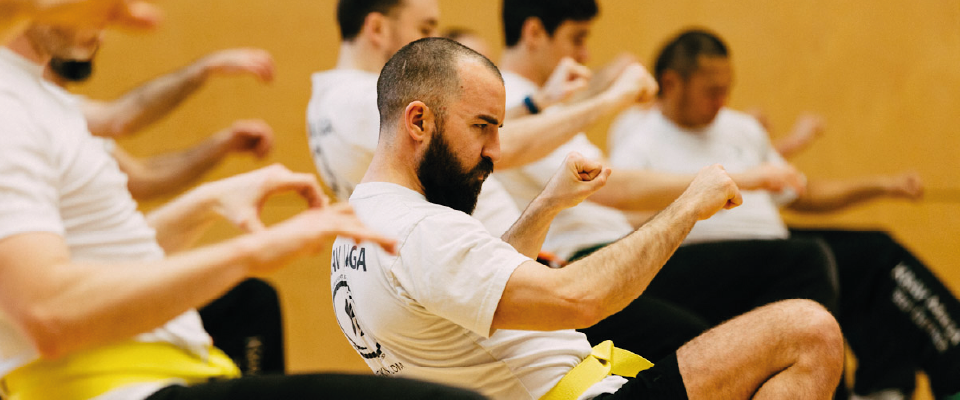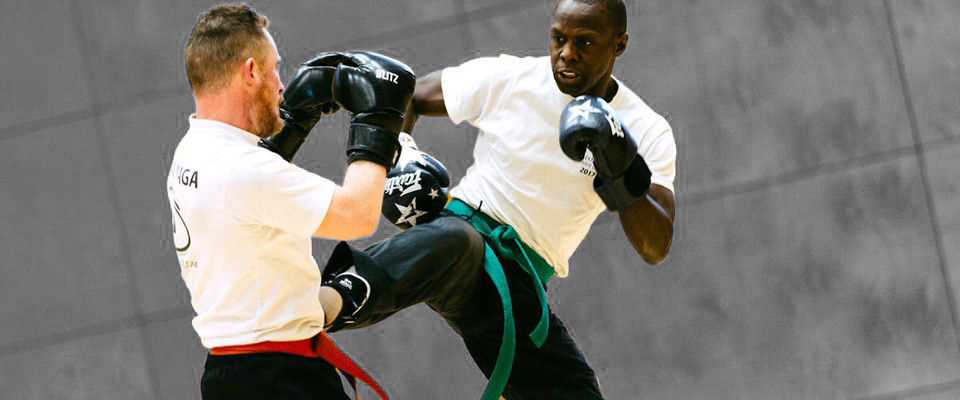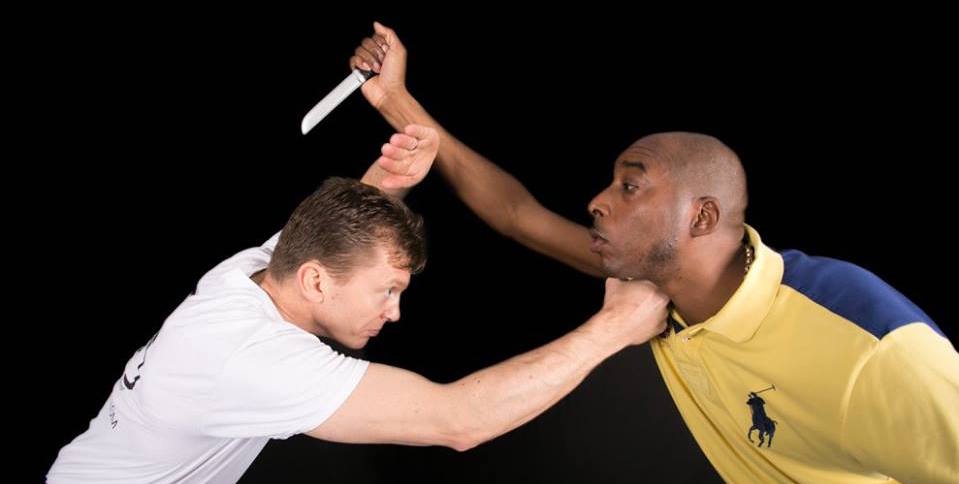As Krav Maga practitioners and instructors, one of the most frequent questions we get asked is, “Are there belts in Krav Maga?” or “Does Krav Maga have Belts?”
So, let’s jump right in; does Krav Maga have belts? In this article we take a look at the early introduction of Krav Maga belts, what colours they are and what the purpose and significance is of belts in Krav Maga.
Are there Belts in Krav Maga?
When Imi Lichtenfeld, the creator of Krav Maga, developed his real life, self defence system he also implemented a student and instructor ranking system. So yes, there are belts in Krav Maga. Imi Lichtenfeld chose Krav Maga belt colours based on the Judo belt system. These are White Belt, Yellow Belt, Orange Belt, Green Belt, Blue Belt, Brown Belt and Black Belt.
The founder of our own FEKM Krav Maga federation, Richard Douieb, trained with Imi Lichtenfeld in Israel. Richard Douieb later introduced the same system of Krav Maga belts which we use today across all FEKM nations, clubs and our 20,000+ members.
It is worth noting that internationally not all Krav Maga clubs follow this belt system as created by Imi Lichtenfeld. Some Krav Maga organisations use alternative systems such as practitioner categories and a system of patches and some use only informal Krav Maga belts ranking.
Wait, What? A White Belt Can Train with a Blue Belt?
Krav Maga is a modern, real-life, self defence system. Unlike the traditional martial arts, this means that a student learns complete self defence solutions to real-life self defence threats from their very first class.This means that you could be learning how to defend and counter a double handed choke from the front, or how to disarm a threat with a knife, from your very first Krav Maga training session.
It also means that a White or Yellow Belt Student can be learning a Green or Blue Belt self defence technique and training with much higher ranking students very early on. So if this is the case, what is the purpose of Krav Maga belts?
If New Students Can Train with Senior Students, what is the Purpose of Krav Maga Belts Ranking?
Each belt ranking in Krav Maga teaches a certain number of skills, techniques, defences and counterattacks. Once proficient in the syllabus of any given belt the student moves on to a deep understanding of the next belt.
So the purpose of Krav Maga belts ranking is as follows:
- To provide a learning structure. The skills learnt and developed at each Krav Maga belt ranking transition to the next more advanced level. The belts build upon each other in related but more advanced skills.
- Solid foundation for development. Each belt syllabus creates a solid foundation for students upon which they can begin training for the next level with confidence.
- Sense of personal achievement. Students are tested and recognised for their achievement at each Krav Maga belt ranking. For many, there is a great sense of personal achievement that comes with this recognition by their instructors and peers.
- Maintaining consistent, high standards. Krav Maga belts, rankings and gradings support the standardisation of students’ abilities across clubs, nations and across the entire global federation.
- International training events. Finally, Krav Maga belts help a lot when there are 500 Kravists from 15 nations in a huge gymnasium 🙂
What Are the Belts in Krav Maga?
There are essentially 7 belts or rankings in Krav Maga although you could argue that it is in-fact 6 belts.
The reason is that the White Belt is not awarded to a student but rather given to new students to indicate that they are novice practitioners at the beginning of their Krav Maga training journey.
The First Three Krav Maga Belts by Colour
White to Yellow Belt in Krav Maga
When a new student begins training, they are given a White Belt by their instructor. This signifies that they are a complete novice and just beginning their Krav Maga journey and they begin learning the Yellow Belt syllabus.
In our FEKM federation, the Yellow Belt Syllabus includes:
- Strikes from natural stance without warning including elbow strikes, various kicks, knee strikes, various hand strikes and punches
- Maintaining guard and evasive fight movement and fight movement while striking
- Defences against punches and kicks from both a natural stance and from guard position
- Defences and counters from strangles and headlocks
- Rolls and breakfalls
- 360º knife defences and understanding range
- The fundamentals of fighting from the ground
- The use of environmental weapons
After a period of consistent learning, training, and practice of the Yellow Belt syllabus a student is then examined at a formal “grading” by senior instructors. If successful, the student is awarded their first coloured belt, the Yellow Belt.
Yellow to Orange Belt in Krav Maga
Once a student is graded (or examined) and awarded their Yellow Belt they train for a period of time focussing their learning on the Orange Belt syllabus.
In our Krav Maga federation, the FEKM, the Orange Belt Syllabus includes:
- More advanced strikes from natural position without warning and from guard
- Defences and counters against straight kicks low to mid-height and roundhouse kicks to the body from both natural stance and guard
- More advanced defences against strangles and wrist grabs
- Backward falls and falls and rolls from height
- Defences and counters against straight punches
- Fighting from the ground
- Knife defences, takedowns and disarms
- 4 minute fight – 2 minutes x 2 rounds
After a period of consistent training and practice of the Orange Belt syllabus a student is then examined at a formal “grading” by senior instructors. In the FEKM this is also the first time that a student’s fighting skills and fight courage are examined. As part of their Orange Belt exam they complete a 4 minute full contact fight. If successful at their grading, the student is awarded their Orange Belt.
Orange to Green Belt in Krav Maga
Once a student is graded (or examined) and awarded their Orange Belt they train for a period of time focussing their learning on the Green Belt syllabus.
In our Krav Maga federation, the FEKM, the Green Belt Syllabus includes:
- Increasingly advanced strikes and kicks from natural position without warning and from guard including crescent, switch, jumping and spinning kicks
- Defences and counters from hair grabs
- Defences and counters from chokes and bear hugs from the front, side and rear
- Defences and counters (locks) from wrist grabs
- Rolls over height and distance
- Increasingly advanced punch defences and counter combinations
- Advanced skills for fighting from the ground
- Increasingly advanced knife defences and counters
- 4 minute fight – 2 minutes x 2 rounds
After a period of consistent training and practice of the Green Belt syllabus a student is then examined at a formal “grading” by senior instructors. As part of their Green Belt exam they complete a 4 minute full contact fight. If successful at their grading, the student is awarded their Green Belt.
The Significance of the Green Belt in Krav Maga
The Green belt is an important Krav Maga belt achievement and milestone. The student awarded their Green Belt now has the status of a “confirmed” Krav Maga practitioner. This is a very good standard of skill for civilian self defence. A Green Belt student will be able to look after themselves with confidence in most personal self defence scenarios.
Importantly, in our FEKM federation a Green Belt “confirmed” student can also begin their training as an instructor.
Blue, Brown and Black Belts in Krav Maga
The three final belt rankings in Krav Maga are the Blue, Brown and Black Belts. We won’t go into syllabus details in this article but for those who would like insight into what it takes to become a Black Belt Kravist, you will be interested in reading the article by our instructor Nicholas Kitson Preparing For Your Black Belt Exam.
Beyond the Krav Maga Black Belt
Many Black Belt Krav Maga practitioners describe the landmark moment when they achieved Black Belt recognition and tied their new belt for the first time as a deeply rewarding achievement.
Ironically, they also describe this moment as the start of a new Krav Maga journey. It is as though the years of training and focus have led to the point where you are ready for a new, even deeper layer of understanding and mastery.
And so the new journey begins. And so, there are a number of Black Belt “Dargas” (or Dans) in Krav Maga from Black Belt 2nd Darga through to Black Belt 5th Darga and beyond, each signifying an increasing level of skill and mastery.
Are You Ready To Begin Your Krav Maga Training?
Are you ready to begin? Join us for our next Krav Maga KickStart Course for new students.
You will get hands-on experience of the powerful self-defence and close combat skills of Krav Maga and learn and apply the four core principles of Krav Maga in real-life self defence scenarios. You’ll train in a friendly environment with our FEKM qualified instructors and other students beginning their Krav Maga self-defence training.
Written by Victoria Kitson
Senior Instructor
EITAN Krav Maga





